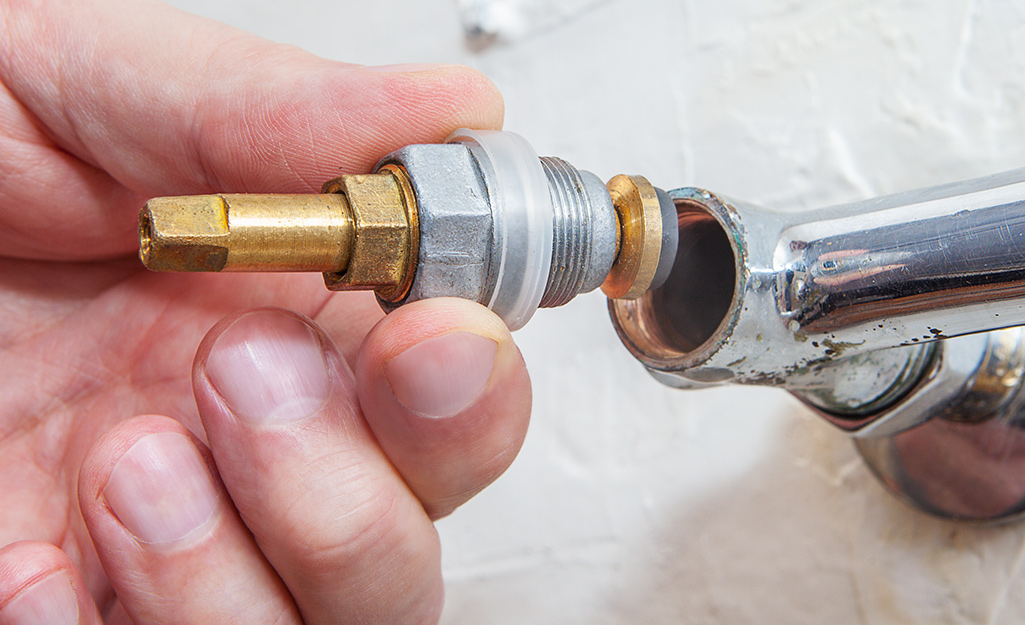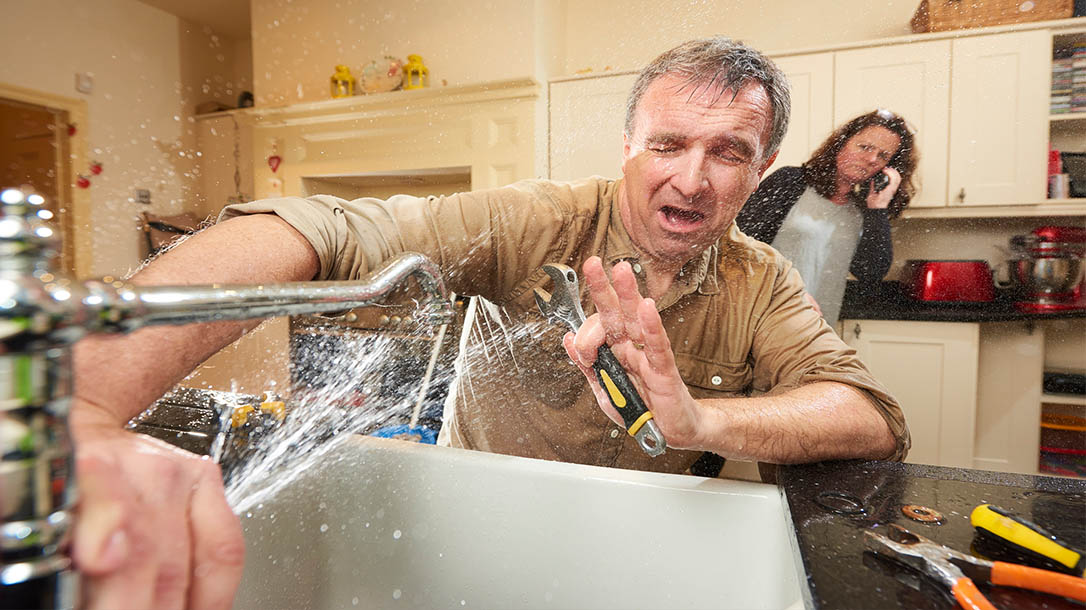Discovering the Importance of Fixing a Leaking Faucet
Discovering the Importance of Fixing a Leaking Faucet
Blog Article
Just about every person has got their private rationale in relation to How to Fix a Dripping or Leaky Faucet .

Dripping faucets might look like a minor hassle, however their effect exceeds just the annoyance of the sound. From wasting water to incurring unnecessary economic expenses and wellness dangers, ignoring a leaking tap can result in different effects. In this article, we'll look into why it's critical to resolve this usual house concern promptly and successfully.
Waste of Water
Ecological Influence
Leaking faucets contribute substantially to water wastage. According to the Epa (EPA), a solitary tap leaking at one drip per second can lose more than 3,000 gallons of water each year. This not only strains water resources but also impacts environments and wildlife depending on them.
Financial Costs
Increased Water Bills
Beyond the environmental impact, dripping taps can blow up water costs considerably. The collected wastefulness gradually translates into higher utility expenses, which can have been prevented with prompt repair services.
Prospective Building Damage
In addition, extended trickling can cause damage to fixtures and surface areas surrounding the tap. Water buildup can create discoloration, rust, and also structural concerns if left unattended, resulting in additional fixing expenses.
Health and wellness Worries
Mold and Mildew Growth
The continuous existence of wetness from a leaking tap produces a perfect environment for mold and mildew and mold development. These fungis not only endanger interior air top quality however also pose wellness threats, particularly for people with respiratory conditions or allergies.
Waterborne Illness
Stagnant water in dripping faucets can come to be a breeding place for microorganisms and various other microorganisms, raising the threat of waterborne conditions. Impurities such as Legionella germs prosper in stagnant water, potentially causing serious illnesses when consumed or inhaled.
Do it yourself vs. Specialist Repair work
Advantages and disadvantages of Do It Yourself Repair Service
While some may try to take care of a trickling tap themselves, do it yourself repair services include their very own set of obstacles. Without correct knowledge and tools, DIY efforts can exacerbate the problem or cause insufficient repair services, lengthening the issue.
Advantages of Hiring a Specialist Plumber
Working with an expert plumber makes sure that the underlying root cause of the dripping tap is addressed effectively. Plumbing professionals have the competence and devices to detect and repair faucet issues effectively, conserving time and decreasing the threat of more damages.
Step-by-Step Overview to Dealing With a Dripping Faucet
Devices Required
Before trying to take care of a trickling faucet, gather the necessary devices, consisting of a flexible wrench, screwdrivers, substitute parts (such as washers or cartridges), and plumber's tape.
Usual Faucet Issues and Their Solutions
Determine the kind of tap and the particular problem triggering the drip. Usual problems include worn-out washing machines, rusty shutoff seats, or malfunctioning O-rings. Refer to supplier instructions or on-line tutorials for detailed assistance on fixings.
Preventive Measures
Routine Maintenance Tips
To avoid dripping faucets, do routine upkeep such as cleansing aerators, evaluating for leakages, and changing worn-out components promptly. In addition, think about installing water-saving gadgets or upgrading to extra efficient fixtures.
Value of Prompt Services
Dealing with leaking taps as soon as they're noticed avoids additional water wastage and possible damages, ultimately saving both water and money in the future.
Impact on Home Worth
Understanding of Well-Maintained Building
Maintaining a property in good condition, consisting of resolving upkeep problems like leaking faucets, enhances its viewed value and charm among prospective customers or tenants.
Influence on Resale Value
Properties with well-kept plumbing components, consisting of faucets, command higher resale values in the realty market. Resolving trickling faucets can contribute to a favorable perception during property evaluations and arrangements.
Environmental Obligation
Private Contribution to Conservation
Taking obligation for taking care of trickling taps straightens with more comprehensive initiatives towards water preservation and ecological sustainability. Every person's activities jointly make a substantial effect on preserving valuable resources.
Lasting Living Practices
By focusing on prompt repairs and taking on water-saving routines, people contribute to lasting living practices that profit both present and future generations.
Verdict
Dealing with a dripping tap exceeds plain benefit; it's a vital step towards conserving water, minimizing economic costs, and securing wellness and residential or commercial property. Whether with do it yourself fixings or professional help, doing something about it to fix leaking faucets is a little yet impactful means to advertise liable stewardship of sources and add to a much healthier, extra sustainable future.
How to Fix a Dripping or Leaky Faucet
A leaking faucet is one of the most common problems that homeowners encounter, but it being commonplace doesn’t make it any less annoying. The constant drip drip drip of a leaking bathtub faucet, showerhead, or sink tap can disturb your home’s serenity. Left neglected, a dripping faucet can also result in higher water bills and discoloration or mold growth in your sink or plumbing fixtures.
Fortunately, you don’t have to be a trained plumber to know how to stop a dripping faucet. With some basic tools, replacement parts, and a little patience, leaky faucet repair is a breeze. In this article, we’ll explain what causes dripping faucets and how you can fix them.
What Causes a Leaking Faucet?
Kitchen and bathroom faucets come in all manner of designs, but most involve some combination of valves, O-rings, seals, and washers. The O-ring is usually the weakest link, but any one of these pieces can wear down over time. Heat, moisture, temperature fluctuations, minerals, mold, and movement can contribute to warping and corrosion, breaking the watertight seal. This just comes with the territory of being a homeowner. Everything is always subject to wear and tear, and some component parts of your appliances and fixtures need to be replaced on occasion. At least replacement O-rings are cheap!
More rarely, dripping faucets can be a symptom of excessively high water pressure. Were this the case in your home, you would probably notice that the leak is not isolated to one faucet. Water pressure issues are harder to resolve on your own. We recommend contacting a professional plumber if you suspect your water pressure is too high.
How to Fix a Dripping Faucet
Pipe wrench or monkey wrench Allen wrench set Screwdrivers Old towel or rag Shut off the water.
Before you do anything, you need to turn off the water to keep from drenching your kitchen or bathroom. You should find a valve under the sink and against the wall. Once you’ve turned this valve, try turning the faucet on to confirm that the water source has been cut off.
If you can’t locate your local valve for the faucet you’re working on, you can always shut off the water to the house at the main valve. Of course, this will prohibit anyone from using the sinks, showers, or toilets while you’re working on the faucet that’s giving you trouble.
Plug or block the drain.
You’ll be disassembling the faucet and removing some small bits of hardware. Plug the drain with a stopper or rag to avoid the possibility of a small screw falling into your P-trap.
Take apart the faucet assembly.
There are several varieties of kitchen and bathroom faucets, each with its own manner of assembly. For detailed instructions on how to disassemble your faucet, you can refer to the fixture’s manual or contact the manufacturer. If you know whether you have a ball, disc, cartridge, or compression faucet, you can find detailed schematics online.
In general, you need to begin by removing the faucet handles. You might notice a small screw that you’ll need to remove with a screwdriver or Allen wrench. If you don’t see any visible securing hardware, it’s likely hidden under a decorative cap that can be unscrewed or popped off with flathead screwdriver.
Remove each piece methodically, consulting a schematic when necessary. Take notes or arrange the pieces in such a way to make it easier to correctly reassemble the faucet later.
Remove the cartridge.
Once you’ve removed the handles and securing hardware, you should be able to remove the valve cartridge or stem. Some cartridges will slide right out. Other faucet models will require you to loosen a nut with a pipe wrench before you can remove the valve stem.
Examine the exposed hardware.
With the cartridge or stem removed, inspect the component parts. Check the rubber O-rings for wear and tear. Also examine the seat washer for corrosion or other damage. These pieces are usually the responsible parties for a dripping faucet, but it’s worth inspecting the other component parts while you have the faucet disassembled.
Find replacement parts.
Once you’ve identified which faucet component has failed, find an identical replacement. Your local hardware store should have O-rings, seat washers, and other standard components in stock. If you have a luxury or uncommon faucet, you may have to contact the manufacturer for a replacement part.
It’s a good idea to take your old parts with you to the hardware store so you can compare them with the store’s inventory and be sure you’re purchasing the correct replacement.
Reassemble the faucet.
With your new parts in hand, reconstruct the faucet and handles. Don’t be tempted to overtighten screws or nuts. You might think this could create a better seal, but it can instead damage or bend a delicate part of the assembly and create a new problem for you.
Turn on the water and test the faucet.
The only thing left to do is test your work. Unplug the sink, turn the water back on, and try the faucet. Congratulate yourself on a job well done!
https://www.libertyhomeguard.com/how-to-fix-a-dripping-or-leaky-faucet/

I was made aware of that article about Why Is It Important To Fix Your Leaking Tap/Faucet? through a pal on a different web blog. Be sure to set aside a second to promote this entry if you appreciated it. Thanks a lot for taking the time to read it.
Report this page